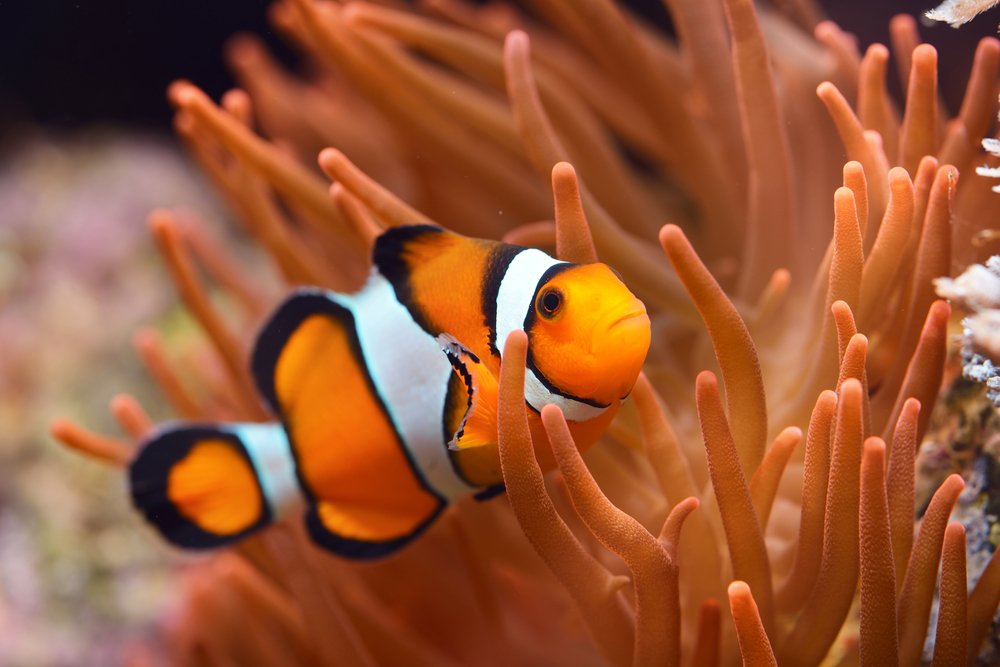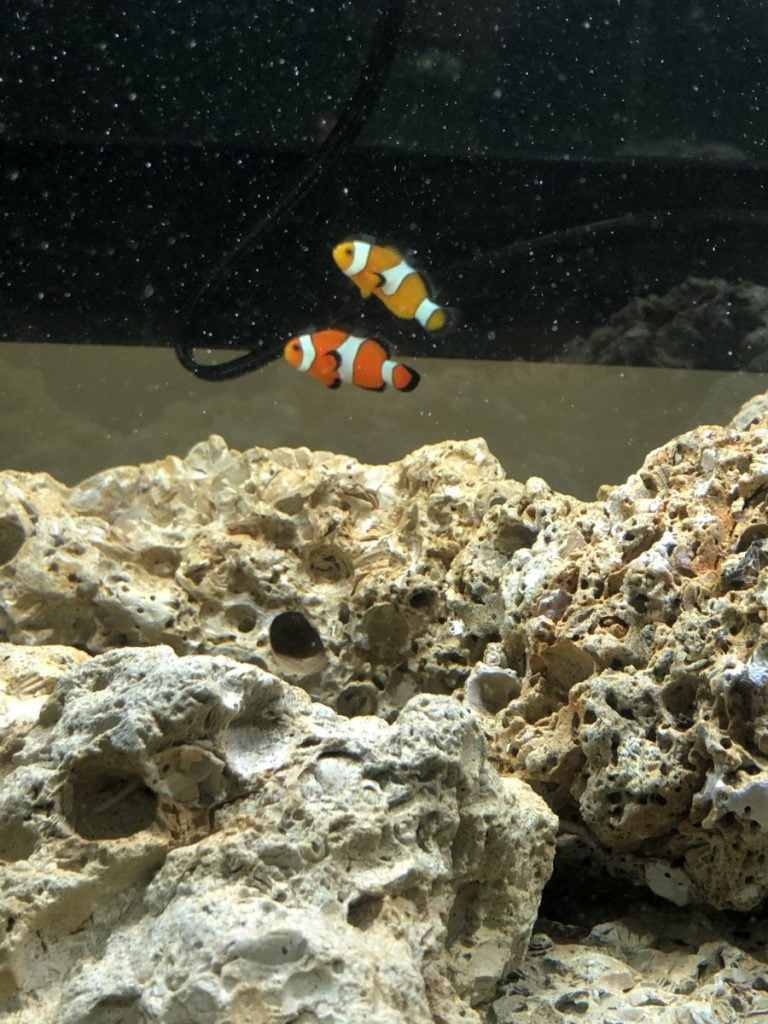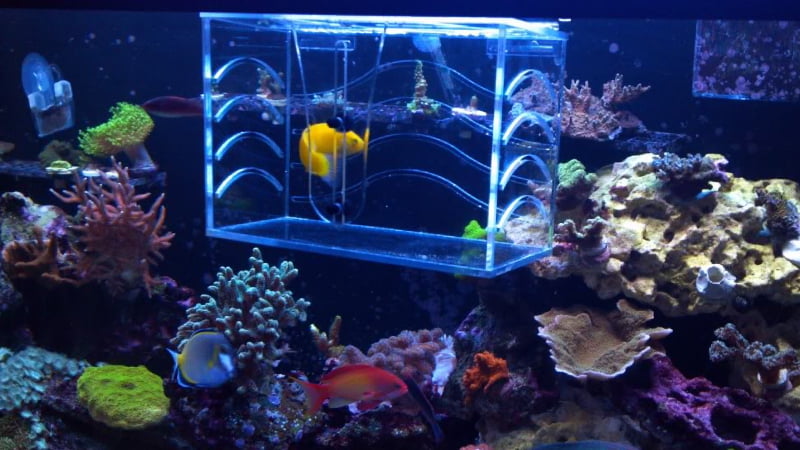Have you ever acclimated a clownfish? I have, and it’s not as easy as it seems. There are several steps that must be taken in order to acclimate them properly. And while many of the steps may seem obvious, there are some things that might surprise you!
In this blog post, I will go over 5 important things about acclimating clownfish that most people don’t know.
See also:
- Common Clownfish Behavior You Need To Know – Do They Fight?
- 6 Things You Should Do To Deal With An Aggressive Clownfish
- Top 2 Exciting Facts Of Clownfish Mating Behavior- You Know?
- What Causes Are Clownfish Fighting? Don’t Worry Too Much
What Is Clownfish?
As of now, 30 species in the subfamily Amphiprioninae are known, the best-known is Ocellaris Clownfish, thanks to it being featured in Disney’s Finding Nemo movie. Clownfish are one of the most popular marine aquarium fishes.
Every clownfish is of the male gender when born. They are sequential hermaphrodites, meaning they change into a female from a dominant male when necessary. Usually, there’s only one female and a group of males that live together. When the sole female retreats or dies, then the most dominant male fish changes sexes to become a new female one.
Clownfish do best in a 20-gallon minimal setup with plenty of hiding spaces. They are reared in captivity and can reach an age of up to 8-12 years (depending on species). Clownfish are also artificially bred in Florida for the aquarium trade.

Is Acclimating Clownfish Necessary?
Fish are prone to rapid changes in PH, temperature, salinity, and other indicators of water chemistry. When you buy a new fish from an online supplier, local store, or another aquarist, the chances they will need to be acclimated into your aquarium water are slim.
Fish stores often lower the salt and chlorine levels in their tanks to minimize the spread of disease, which improves customer safety.
Moving fish into your aquarium can always be stressful. So it is really important to make the transition as easy and stress-free for them as possible.
Things You Need To Prepare For Acclimating Fish
Regardless of the method you choose to acclimate your fish, there are a few items that will last for years. And it’s better to get your own things rather than borrowing from partners.
- Scissors
- It is important that you have one clothes peg/pin for each transport box
- A small jug, measure 1/2 cup.
- Fish Net- Fits inside the transport bag opening
Additional items for drip method:
- Clean bucket or container
- Airline Hose – 6ft
Popular Clownfish Acclimation Methods
There are two tried-and-tested methods of acclimating invertebrates, fish, and corals. Choosing a method depends on how sensitive the organism is to environmental changes.
- Bag Floating Method – Ideal for fish
- Drip Method – Ideal for Invertebrates & Coral
Bag Floating Method
- Take a clean cloth and pour in water from your aquarium
- After transporting a clownfish, it’s important to give the transport bags and the aquarium water a good scrubbing before releasing them.
- Always rinse the outside of your bags in SALT water or RO/DI water to keep the clownfish’s home environment as close as possible to their natural habitat.
- To avoid temperature problems, place the bag in the aquarium for 15 minutes.
- After opening the transport bags, roll the opening of the bag down one inch. This will keep any water from seeping out into your display or quarantine tank
- Fill a small jug with about one-half cup of water from your aquarium and pour it into the transport bag.
- Repeat this process every 5 minutes
- Once the bag is mostly full, remove half the transport water from the jug and dispose of it down the drain.
- Repeat Steps 7 & 8 until you have completed more than 30-50 minutes
- Once the water in your bag matches the pH and salinity of your aquarium, you can move on to step 11.
- Transfer the fish from the transport bag to your tank by using a net.
- Carefully remove the fish from their transport bag and discard it.
Please be noted that avoid water from the transport bag entering your aquarium!
Drip Method
- Washing and rinsing any previously used container or bucket will help to avoid bringing unwanted organisms into the system.
- Place the bucket next to the aquarium
- After you have filled the bucket with water from the tank, use a pair of scissors to cut open all the transport bags. Empty all of their contents into the bucket
- Make a note of the water height while observing your clownfish. Find another level at double that height, and make sure it is at least 3-4 inches from the bottom
- Secure your airline pump hosing with a clothes peg on the rim of your tank
- Put a loose knot in the airline then suck on the end of the hose on your bucket side to start filling it with water from your aquarium. Stop sucking before you get any water in your mouth!
- The tighter the knot, the more flow you will have. A good drip rate is 2-4 drips per second – a loose knot leads to faster flow
- The water in the bucket should double (to 24 cups) and then remove half of it.
- Repeat this step for 40-50 minutes
- You have to check how the water is in your bucket for temperature, salt level, and pH levels. Match any readings with your aquarium so you can move on to step 11.
- Carefully transfer the fish from the bucket to its new home with a net.
- Rinse and dry the bucket, then store for future use.

Caring For Your Recently Acclimated Clownfish
After you introduce a new clownfish to your saltwater aquarium, they may need time to adjust. If the tank includes live plants or corals, leave off the lights for four hours. If there are no living plants or corals in the tank, turn on bright lights after at least four hours have passed since adding the fish.
It is best to acquire a new clownfish in the evening, as it will have ample time to acclimate before the next full day starts.
Keep an eye on new and established fish to ensure that you have settled them well.
If the dominant fish is not accepting your new addition, then you need to isolate it from the new fish. Never place your new fish in isolation and allow it to settle into its environment.
If the fish is aggressive, drop it in a small isolation cage that can be easily dropped into an aquarium. Turn the cage on its side with slots to allow water to flow through and give it some time out for a couple of days before placing it back into the tank.
It’s important to ensure that your new additions are eating well and willing to explore the open space of the aquarium. To entice shy fish, you can feed them with a turkey baster full of food using spot feeding.
This is one reason why it’s so important to quarantine new fish before adding them to the main aquarium. Getting their diet and health stabilized can mean the difference between survival and waste away in the first few weeks.
Video: Acclimating My New Clownfish
FAQs
How long does it take to acclimate a clownfish?
It is important to keep the new housing for your fish stable for at least 30 minutes and up to an hour. This process takes time, but it will always be rewarding later on in an aquarium with stability from a well-acclimated saltwater animal.
What are the steps before acclimating?
While moving new fish into a freshwater aquarium can be stressful for your source fish, there are some simple steps that can make the process easier:
– To accommodate your clownfish when acclimating them, turn off the lights on their newly-installed display tank or in their quarantine tank.
– Use the dimmer switch on your light to adjust the brightness in the room.
– Never have ANY light aimed directly into the transport box of your new fish (especially from overhead lights)
– Turn one side of the box so light can penetrate and allow five minutes for acclimation.
– It is important for the clownfish to adapt to their surroundings gradually in order to learn they are safe. The process can take up to 5-10 minutes.
Now that your fish are in their new tank, they’re ready to begin one of the fluid acclimation processes, depending on their sensitivity.
How long can clownfish live in a tank?
Clownfish from the same species may vary in their maximum life expectancy, depending on how they live. In a home aquarium, fish may live anywhere from three to five years or more; while in its natural environment, it could easily live up to eight-twelve years.
Conclusion
Properly acclimating new fish is a simple process, because it only takes a short time to do. Once you have done it right the first time, you are sure to become an expert in this area.
Get a quarantine tank set up if you can, and medicating anything new is always an important step. However, be sure to get a feel for what your fish are like before rushing into any changes.
Thanks for reaching out to me! I hope this article has answered your question and is loaded with all the information you need about keeping clownfish and wish you all the best in having a successful clownfish tank.

Annette M. Chaney is an experienced marine biologist with over 20 years of experience as an aquarist and fishkeeper. She started her first aquarium at a young age, filling it with frogs and goldfish obtained from the ten-cent pet store.
Annette grew up caring for and breeding African Cichlids, which led to a hobby in high school that doubled as a profitable means. Attending Reed College gave her time to solidify herself as an accomplished aquarium caretaker with an eye for sales. After that, from 2009 – 2013, she studied at Roger Williams University – one of the most prestigious universities for Aquaculture and Aquarium in USA. She is the founder of AquariumCircle since 2010.
